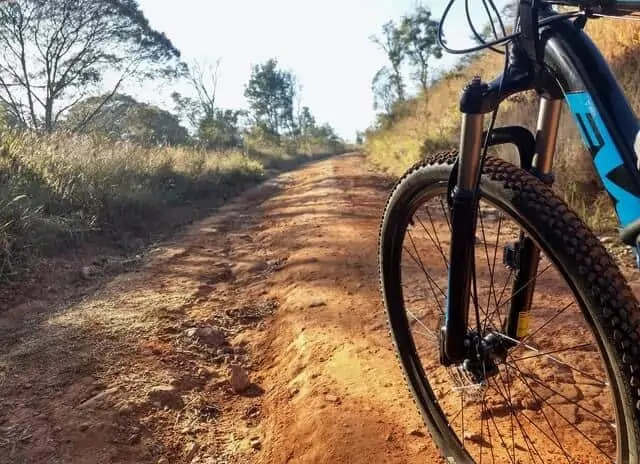Undoubtedly, the Appalachian Trail is one of the most well-known and beautiful routes in the US. The trail covers 2,190 miles from end to end and offers visitors some great outdoor views all way along.
If you are a fan of outdoor exploration and wish to connect with mother nature, you could plan your next trip to this beautiful destination. And when it comes to covering greater distances affordably, bike touring is definitely a great option.
So, can you bike the Appalachian Trail?
Here’s Why You Can’t Bike The Appalachian Trail
The Appalachian Trail is designed and intended for foot travel only, so any type of biking is prohibited on the trail. If bikes were allowed on the trail then it would become more difficult to maintain the trail and keep it safe and healthy.
Using a bike on certain parts of the trail would be dangerous and could interfere with other hikers. Since there are many connected trails on the Appalachian Trail there are some small trails that are shared with bikes, but overall they aren’t allowed.
Reasons Bikes Aren’t Allowed on the Appalachian Trail
Not all trails are built to handle the effect of having bikes travel on their path. There are many reasons why a trail like the Appalachian Trail wouldn’t allow bikes including safety reasons and trail maintenance.
Riding a bike on some trails could be dangerous if there are places where the trail becomes very narrow. If the trail is steep or travels downward very quickly it could put other hikers or people walking at risk of being hit.
Biking also puts more pressure and wear and tear on the terrain of the trail. Having bike wheels go over the same spots can lead to increased erosion and tread-way damage. When a mountain or trail is limited to foot traffic it should last longer and require less fixing and maintenance over time.
Biking on the Appalachian Bikeway
The Appalachian Bikeway is a touring route that runs parallel to the Appalachian Trail and allows long-distance biking. There are 11 different sections of this bikeway that run next to the Appalachian Trail and they’re located in Maryland, West Virginia, Virginia, North Carolina, and Georgia.
A great number of bicyclists take trips to any of the above locations, and the hope is that there will be increased places to expand this biking trail in the future.
Tips For Biking on Trails
Plan your biking trip carefully
The first thing to consider is whether you are going on an extended biking tour or just heading out for a day. Since some biking trails cover some rough terrain, you should be careful and organize your trip beforehand.
Start by looking at a map and decide upon the exact route you wish to follow. That will depend on the amount of distance you wish to cover, as well as the available time.
For those planning on staying overnight, extra carefulness is required.
Accurately estimate the distance you cover every day and ensure you have sufficient time to set up camp before night falls. Bringing along a first aid kit, the right mounting equipment, lots of water and food, and your cellphone fully charged are some of the most basic, yet important things to remember.
Prepare your bike wisely
Depending on the time of year you wish to bike larger trails, proper preparation is vital. During the cold winter and autumn season, ice and snow can make your biking experience quite dangerous.
On the other hand, riders should not underestimate the summer season, during which time the whole region is susceptible to powerful thunderstorms. Packing all the necessary equipment, including suitable clothing, boots and gear can really help you out in case of an emergency.
Investing in new lights and brakes for your bike is also a great idea before starting your trip.
The bike’s tires are of critical importance, as well. Ideally, opt for a pair of wire bead tires to create extra stability and traction while on the go.
Be aware of the risks
Biking trails usually travel over various terrain and high-risk areas that include cliffs, rocks, and branches. Some spots are more dangerous than others, some low-lying regions are prone to flash floods and there are also some rough and steep hills.
Choosing a route with fewer extra obstacles can really help bikers, particularly the less experienced ones.
Conclusion
Biking across the Appalachian Trail would definitely be a memorable experience, however biking is not allowed on the trail at this time. All the hidden beauty of this large trail awaits visitors from all over the world but foot traffic is the best option if you wish to explore a large part of it safely.

